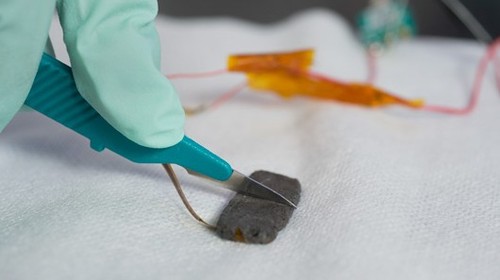Pressure-Sensitive Synthetic Material Heals Itself When Torn Or Cut

Researchers at Stanford University have created the first pressure-sensitive synthetic material that can heal itself when torn or cut. The material combines the self-healing ability of a plastic polymer with the conductivity of a metal and might be used in next-generation prostheses or self-healing electronic devices. To create such material the team began with a plastic made of long chains of molecules joined by hydrogen bonds, allowing the molecules to break apart easily. Then nickel nanoparticles were added to provide the conductivity required to make the material pressure-sensitive and as a result they got plastic with fine conductive properties. Professor Zhenan Bao from the lab of chemical engineering says, that adjusting the size and shape of the nickel nanoparticles or the chemical properties of the polymer may help accelerate the healing process in future generations of the material. The material might be used as a touch-sensitive skin in prosthetic devices and besides it might also register the degree of bend in the joint of a prosthetic limb. Among the other possible applications are electrical devices and wires coated in the material that could self repair to get the electricity flowing without expensive and time-consuming maintenance.
Via:gizmag.com
| Tweet |










